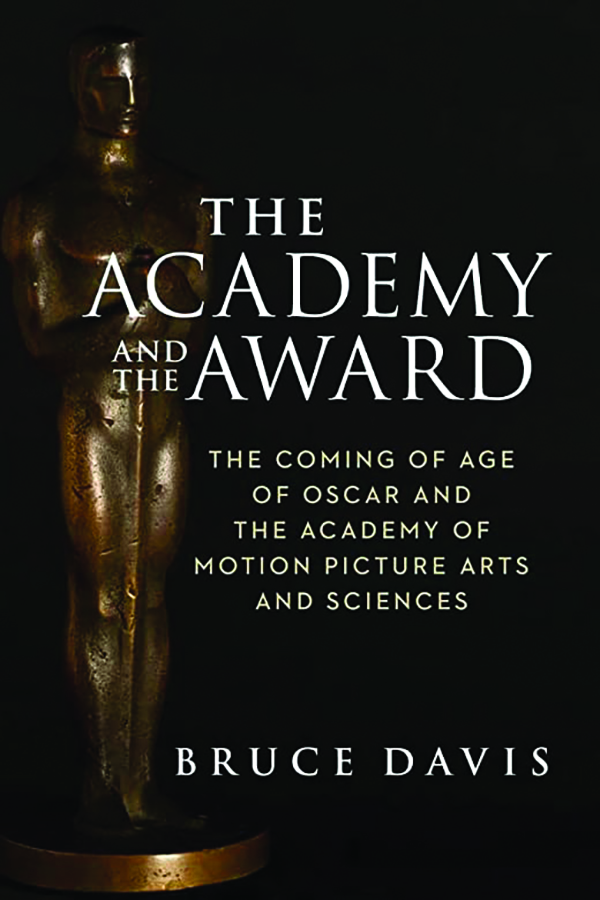
A satisfying history of the Oscars
Daniel Ross Goodman
The past several years have not been kind to the Oscars.
In 2017, the biggest blunder in Academy Awards history occurred when Warren Beatty and Faye Dunaway announced that the Oscar for best picture had been won by La La Land when the winner had in fact been Moonlight. The envelope malfunction of epic proportions led to weeks of hand-wringing and inquiries into PricewaterhouseCoopers, the accounting firm in charge of guaranteeing the confidentiality and integrity of the Academy Awards announcements on Oscars night. In 2018 Kevin Hart, one of the country’s most popular comedians, was forced to step down from his role as host of the 2019 Oscars due to public pressure over a series of allegedly offensive remarks he had made over Twitter almost a decade prior to the Oscars naming him as host, causing the Oscars to go hostless for the next two years.

The 2021 Oscars were marred by the bizarre decision to hold the ceremony in a retrofitted train station and by an even more disappointing in memoriam segment that seemed sped up for the attention-deficit generation, giving hardly even two seconds to honor Hollywood legends like Sean Connery and Olivia de Havilland. This past year’s Oscars, with the reassuring return of hosts and held once again at the Dolby Theatre in Hollywood, seemed to at last be on its way to restoring the Oscars to their former glory. But on a night that should have been one of the great feel-good Oscars moments of our time, one of the most popular American actor’s reception of his long-awaited first Oscar was tarnished in a manner that still defied credulity when Will Smith strode onto the stage and slapped Chris Rock across the face. The Slap Heard Round the World was the nadir of a nearly decadelong stretch that also witnessed persistent agonizing over the ideal number of best picture nominees, ruing and recriminations over the academy’s decision to drop several technical awards from the Oscars ceremony, and continual fretting over the inexorable decline in the Oscars’ annual TV ratings.
In spite of all the turmoil that has been roiling the Oscars during this still-young century, there is still no more prestigious award in film, and arguably in all of the arts and entertainment sphere, than the Academy Award. Despite all the scandals large and small and all the blotches that have blemished the Oscars’ once-brilliant luster, this fall and winter, film distribution companies will still market their movies on the strengths of their actors’ and directors’ past Oscar victories and on their films’ present Oscar-winning potential. And despite how frustrating the Oscars ceremony continues to be, movie lovers around the world will still tune in to the Oscars this spring.
But what about the history of the Oscars themselves? How did the Academy Award gain this seemingly unshakable primacy of place in film fans’ consciousness? And how did one small clique of movie industry insiders create and develop the institution that we now know as “the academy” into such a force in the film industry that every fall, producers spend millions on their movies’ Oscar campaigns while compelling their movies’ stars, most of whom usually oblige, to go through what can feel like an endless awards season circuit gauntlet of ceremonies, brunches, functions, and pressers, all in the hope of winning one 13-inch golden trophy?
Bruce Davis, the Academy of Motion Picture Arts and Sciences’ executive director for 22 years and a movie industry insider with 30 years of experience working for the academy, is perfectly positioned to tell the heretofore untold story of this oft-secretive, perennially scrutinized organization. His new book, The Academy and the Award, provides movie fans, film historians, and all those interested in American arts and culture with the first-ever comprehensive account of the history and evolution of the academy.
To create this epic work of history on America’s preeminent film institution, Davis sorted through untold numbers of previously unexamined academy records and countless boxes of archives of academy board meeting minutes, uncovering some shiny treasures along the way, such as a stash of filled-out Oscars ballots from the first-ever Academy Awards. Davis’s focus is on Oscar’s early years, giving us a Portrait of the Oscar as a Young Film Award. Another book or two might be needed to complete the story of Oscar into the award’s adulthood and current senior status.
Contrary to our contemporary perception of the academy as a polished, pristine institution residing at an empyreal remove from the hurly-burly of the movie business, Oscar’s youth was filled with numerous obstacles that stood in the way of his rise. Despite an early stable of board members that included Hollywood royalty such as Frank Capra, Cecil B. DeMille, David O. Selznick, Darryl Zanuck, James Stewart, and Clark Gable, young Oscar had to contend with resentful and antagonistic rivals, conflicts with competing guilds, accusations of ulterior motives, and a perennial cash deficit. But Oscar persisted. His reward for his endurance, in Davis’s judgment, was that he would grow up to become not only the most famous award in the arts but also one of the cultural forces that would make critics realize “that the once-disregarded motion picture was one of the arts.”
Davis is not only a supremely confident guide to the Oscars’ history but an engaging and entertaining narrator as well. His prose is consistently colorful and often novelistic in its vivid scene-setting and descriptive detail — of Hollywood moguls’ lavish homes, of 1920s automobiles, silent-era actors, and more. This can at times be a turgid and complicated history involving a whole coterie of now-unfamiliar alphabet soup arts and movies organizations — bravo if any of you have any idea what the MPPDA, AMPP, NAMPI, SMPE, or IATSE were — but Davis enlivens these and other somewhat cumbersome early film history details with lucid explanations and a good sense of humor. “A roomful of movie executives was and is a no more stimulating environment in which to have a cocktail than a roomful of mortgage brokers.”
And the fact that Oscars are often won by people who happen to be either famous or beautiful (or both) has certainly helped to make the Oscars more appealing “than awards for, say, real estate salespeople.” Sheesh — as if the housing market wasn’t in bad enough shape! But no matter the target of Davis’s quips, his spoonfuls of humor do help make this intricate history go down.
Among the early Oscars history FAQ that David adeptly answers, such as how the little golden nude figurine we now know as “the Oscar” became the Academy Award statuette — and why, after all, is he nude? — Davis also explains why “sciences” is part of the academy’s full name, as well as why they called the organization an “academy” in the first place. This was a strategic choice, Davis recounts, made in large part to acclimate egalitarian-minded Americans to this organization’s and its honorees’ inherent elitism. “Academies,” as Davis explains, “are honor societies; the whole point of them is to pay respect to a rare group of people who have produced a distinguished body of work in the area that the academy celebrates.”
The continuing existence of the Oscars and our own continuing interest in who gets them is one of the strongest cultural counterweights we still have to the millennial and Gen Z participation trophy ethos. For this reason alone — for continuing to uphold the concept and reality of merit in a cultural climate that too often seems dead set against it — and for everything that it means to the movies and to American culture, let’s hope that at 95 years young, Oscar’s life is only just beginning.
Daniel Ross Goodman is a Washington Examiner contributing writer and the author, most recently, of Somewhere Over the Rainbow: Wonder and Religion in American Cinema.
